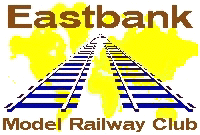
Finale of the A4

|
|
Finale of the A4 |
|
The A4 pacific locomotives had a surprising and welcome swansong in Scotland in the early 1960's. They were brought in to replace unreliable diesel power on the prestigious three hour expresses between Glasgow Buchanan Street, Forfar and Aberdeen. Timings today are faster and over a longer route via Dundee. The comfortable A4 hauled trains consisted usually of seven or eight Mk.1 carriages and usually including a Griddle Car in the consist providing comprehensive refreshments facilities. Nowadays passengers have to endure a usually overcrowded three car commuter diesel multiple unit with high density seating for the same journey and with a limited trolley catering service, that is if the steward is able to get the trolley past all the standing passengers. Progress is not always for the better.
The final public run of an A4 for British Railways took place on Saturday the 3rd of September 1966 from Glasgow Buchanan Street to Aberdeen and return.
Click on photos for a larger image. Use browser "BACK" button to return
| If it were not for the poor availability of the NB2 diesel electrics, none of the following scenes would have been possible. This is Glasgow Buchanan Street Station at around 20:00 during the summer of 1966. | |
| What we came to see. Our first view of an A4 is of Bittern in regular service arriving at Glasgow Buchanan Street Station during the summer of 1966. | |
| Once the empty stock had been removed, Bittern awaits a cleared signal to proceed to the shed. Summer 1966. | |
| On now to the final day, 3rd September 1966. Having arrived at Aberdeen, Bittern was removed from the train and proceeded to Aberdeen Ferryhill engine shed for turning and watering. By the time of our arrival, turning had already taken place. | |
| We were welcomed into Ferryhill engine shed without restriction and encouraged to wander freely. In those days people were empower with a degree of common sense, which is not common today and kept well clear of the adjacent main lines. | |
| Ferryhill was home to two other A4 locomotives that day but they were not in steam, Kingfisher and Lord Farringdon, although this one was missing its tender. | |
| Ironically, Kingfisher was hauled out of the engine shed by a NB2 locomotive, one of the examples the A4 had been brought in to substitute for. | |
| The NB2 locomotives would endure for another few years (see NB2 page) but unlike the A4, none were deemed worthy of preservation. | |
| The motion arrangements of Kingfisher. | |
| We are back now at Aberdeen and Bittern is ready for its final journey for British Railways. | |
| Once again, great hospitality was extended to customers and we were welcomed into the cab for a fireman's view of the way ahead. Common sense was exercised as to crossing the line to gain a better viewpoint. Climbing to the top of the signal was actively encouraged, two at a time of course to prevent overloading. This sort of behaviour would give the Health & Safety fanatics palpitations if this occurred today. What a sad state of affairs. | |
| Patience was rewarded and this is the view from the signal post top. Steam is raised and we are ready to return to Glasgow, for the final time behind an in service British Railways A4 locomotive. The end of an era indeed. | |
| This is Aberdeen Station and a view of the departures and arrivals board. | |
| Some A4 locomotives escaped the scrap yard and this is Union of South Africa on the Lochty Private Railway in 1970. | |
| After a spell in obscurity at least Union of South Africa is back where it belongs, on the main line. Despite some petty political wrangling resulting in a temporary name change to Osprey, normality has now been restored. | |
| After retirement a couple of A4 locomotives crossed the Atlantic, Dominion of Canada going to Canada and Dwight D Eisenhower to the USA as seen here in 1991 at the Green Bay Railroad Museum in Green Bay, Wisconsin. |